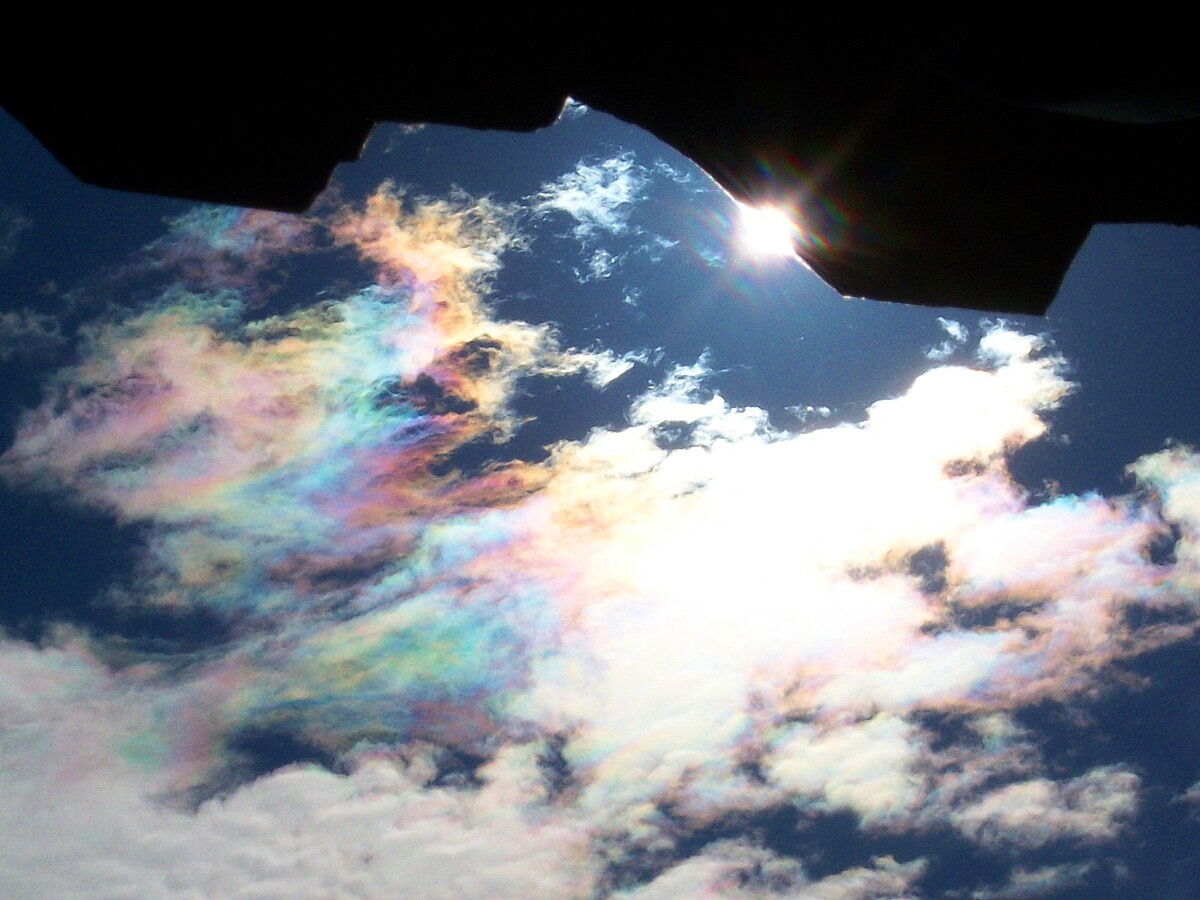Lenticular Cloud over Yakima, Washington, US on December 27, 2022
It reminded me of this movie

It reminded me of this movie


This was like glowing mist in the woods, you could see the silhouettes of the trees from distant.


Lenticular Cloud over Bursa, Turkey (18.01.2023).
Photos taken by Hava Fum.
This is how Turkey dawned this January 19, 2023, clear sky but with a small detail; I am not a fan of rare clouds, but this one I buy as a possible camouflage.



There’s still much to learn about how meteoric smoke interacts with the atmosphere and affects life on Earth, but scientists have already discovered a lot.

Noctilucent clouds observed by a NASA long-duration balloon. Credits: NASA's Goddard Space Flight Center
People have observed iridescent clouds at polar latitudes in the summer since the late 19th century. It was long speculated that these noctilucent, or night-shining, clouds were made of ice. Scientists confirmed that in 2001 using data from a precursor to SOFIE. The finding answered one question but raised another. Ice needs a nucleus such as a grain of dust on which to crystallize, and the upper atmosphere where these clouds form was thought to be quite clean. Where did the dust come from? In 2012, using SOFIE, the researchers found their answer: meteoric smoke.
There is some speculation among scientists about other effects as well. One of them is the phenomenon of iron fertilization. Iron is essential for photosynthesis, the process by which plants convert sunlight into sugar. In the ocean, where phytoplankton reside, iron can be hard to come by. Much of it blows in as dust from land before sinking quickly. Some scientists suggest that another source might be meteoric smoke that has drifted down from the mesosphere. So it’s possible — but not certain — there’s some extraterrestrial iron contributing to photosynthesis in the ocean!
Scientists are also looking into the role of meteoric smoke in water formation in the mesosphere. It’s possible that oxygen and hydrogen react in the mesosphere, forming water. But like the ice crystals in noctilucent clouds, the hydrogen and water would need a hard surface upon which to react. Meteoric smoke might provide the necessary surface.
“There are questions and mysteries in our atmosphere that meteoric smoke may play a role in,” Hervig said. “It's really frontier stuff.” Data from SOFIE continues to help answer some of these questions, offering insight into the effects these cosmic particles have on Earth.
A "Mysterious" Flying Spiral was seen over Maunakea. 2023-01-18 UT. Really unusual view! Any idea about what it is? Our keen viewers discovered this rare event. According to them, it seems it is related to the satellite orbital deployment operation. A new satellite was launched earlier this day by Space X. The video was from our "Subaru-Asahi STAR Camera" which is jointly operated by NAOJ (Subaru Telescope) and Asahi Shimbun (Japanese newspaper company).
This particular cloud made the Tucker Carlson broadcast last night:Lenticular Cloud over Bursa, Turkey (18.01.2023).
New photos
The weather channel of Carlson’s own network did a good job explaining that it was a lenticular cloud, which usually forms over mountains or ridges and is often a harbinger of rain.
Carlson moved right along to another subject. But Twitter wasn’t about to let it go — not when the cloud in question resembled a vagina to many.
They mercilessly mocked the conservative host over that.


Can we expect a phallus shaped one soon in the spirit of equity?


| 37°N to 41°N | |
| Longitude | 102°02′48″W to 109°02′48″W |
|---|
As it passes through the atmosphere, the radiation (see Solar energies) from the Sun interacts with gaseous molecules and particles (water droplets, dust, aerosols) which are present. Two essential phenomena then occur: absorption and scattering. When radiation is fully or partially absorbed, there is energy transfer between the radiation and the molecules with which it interacts. This results in its attenuation in the direction of propagation. For example, ozone in the stratosphere (see The Earth’s atmosphere and gaseous envelope) absorbs almost all ultraviolet rays, of wavelength less than 0.3 µm, which are very harmful to living species, hence the need to protect this ozone layer.
When radiation is not absorbed, it can be deflected in all directions, it is the phenomenon of atmospheric scattering, the nature of which depends on several factors: the wavelength of the radiation, the density and size of particles and atmospheric molecules, the thickness of the atmospheric layer to pass through. There are generally three types of scattering: Rayleigh scattering, Mie scattering, from the names of those who discovered and analyzed them, and non-selective scattering. The prevalence of each of these types of scattering depends on the state of the atmosphere, as described below.
